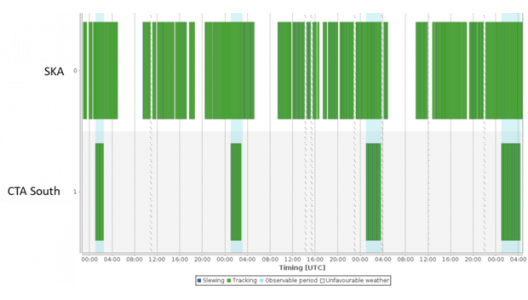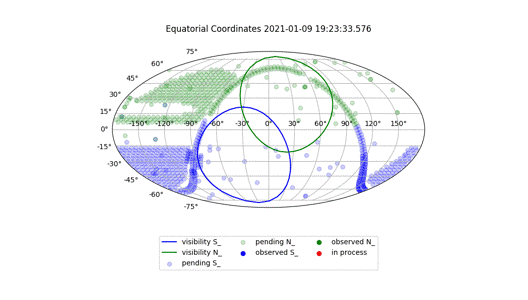Scheduling algorithms for large and distributed infrastructures
Josep Colomé Ferrer (IEEC, Spain), John Lightfoot and Alan Bridger (STFC, UK) - ASTERICS Work Package 5
In multi-messenger astrophysics, multiple observatories screan the same area of the univers in different wavelengths and provide a more comprehensive knowledge of the observed sources. This is a major step for new science to be learned. It is clearly worth promoting a coordinated scheduling of distributed observatories to maximize this full sense view of the sky, and considering contemporaneous or simultaneous observations of high-interest events. Many factors play a role in scheduling observations, for example the weather, instrument availability and common fields of view between observatories. In addition, multi-observatory scheduling requires also a suitable accessibility policy and a common platform for observatories to share schedules and use them to eventually optimize them in a coordinated manner. We used CTA and SKA as an example to develop an algorithm that allows for scheduling of multiple observatories for pre-planned observations. This demonstrator shows the increase in scientific performance measured in terms of single and coupled facility goals. An additional scope is also to add the ingredients for an automatized scheduling of observations in response to external triggers. This would allow a quick follow-up after a transient event has been detected by an observatory, which is a key building block for multi-messenger science in the new era of large surveys that are expected to be massive alert producers.



 ASTERICS is a project supported by the European Commission Framework Programme Horizon 2020 Research and Innovation action under grant agreement n. 653477
ASTERICS is a project supported by the European Commission Framework Programme Horizon 2020 Research and Innovation action under grant agreement n. 653477